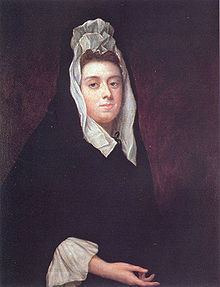Nationality British Role Member of Parliament Spouse Mary Davis (m. 1677) Grandchildren Catherine Leveson-Gower | Name Sir Grosvenor, Died July 2, 1700 Political party Tories | |
 | ||
Children Sir Richard Grosvenor, 4th Baronet, Roger Grosvenor, Anne Grosvenor, Thomas Grosvenor People also search for Robert Grosvenor, 1st Marquess of Westminster | ||
Sir Thomas Grosvenor, 3rd Baronet (20 November 1655 – 2 July 1700) was an English Member of Parliament and an ancestor of the modern day Dukes of Westminster. He was the first member of the family to build a substantial house on the present site of Eaton Hall in Cheshire.
Contents
Early life and education
Grosvenor succeeded to the baronetcy on the death of his grandfather Sir Richard Grosvenor, 2nd Baronet on 31 January 1665. His father had been killed in a duel in 1661 and at the time of the succession he was aged eight. He had been born at Eaton Hall, Cheshire, and his mother was Christian, daughter of Thomas Myddleton of Chirk Castle, Denbighshire. He was educated by a private tutor, who also accompanied him when he undertook the Grand Tour, in his case, a three-year educational tour of France, Italy and the Levant, starting in 1670. On his return he set about building a new house at Eaton. At that time the family house was a medieval moated house. The new house was the first substantial one to be built and it was constructed to the north of the older house. Grosvenor appointed the architect William Samwell to design it and building started in 1675. By 1683 over £1,000 (£140,000 as of 2016) had been spent on the hall. The money for this venture came partly from the estates, and also from coal and lead mines, and from stone quarries in north Wales, that were owned by the family.
Marriage
In 1677 Grosvenor married; he was aged 21 and his wife, Mary Davies, was only 12. She was the daughter of Alexander Davis, a scrivener (scribe) and had inherited land to the west of London. This was part of the Manor of Ebury (previously Eia) and Mary's portion consisted of "swampy meads" (marshland). The area was later to become the Mayfair, Park Lane and Belgravia areas of London, a prosperous part of the Grosvenor estate. Mary was buried in the churchyard of St. Margaret's Church, Westminster, where in 1892 her tomb was the only one to be seen there, close to the north porch of the church. The couple had three daughters and five sons. Two of the sons, Thomas and Roger, died young; the other three sons all succeeded to the baronetcy, Richard became the 4th Baronet, Thomas the 5th, and Robert the 6th.
Public life
Grosvenor played his part in public life. In 1677 he was granted the freedom of Chester and later the same year he became an alderman. Two years later he was returned as a Member of Parliament for Chester for the first time, in what became known as the Habeas Corpus Parliament; in all he was to serve in six parliaments. In 1685 he became Mayor of Chester and later that year raised a troop of horses to support James II in the Monmouth Rebellion. Grosvenor served as sheriff of Cheshire in 1688–89.
Later life
Mary, Lady Grosvenor, converted to Roman Catholicism shortly after her marriage. Because of this, and because Eaton Hall was used as a meeting place for Catholics, Grosvenor's loyalty to the king was questioned. However he continued openly as an Anglican until his death. This occurred in 1700, and he was buried in Eccleston church. His surviving sons were all under age; Sir Richard Myddelton, 3rd Baronet, and Thomas and Francis Cholmondeley were appointed as guardians.
